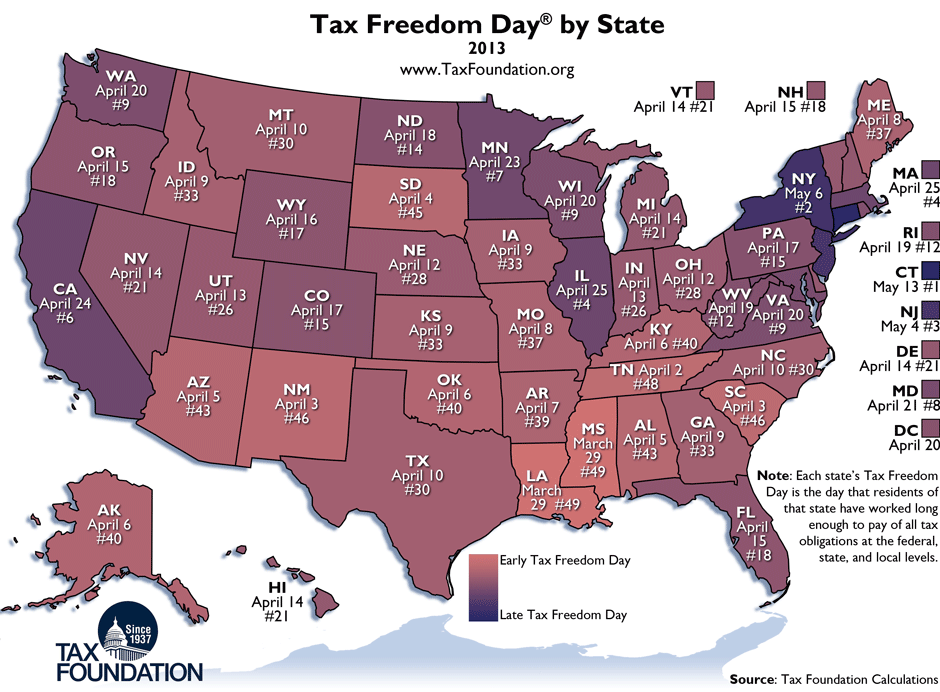Income Tax
‘Tax Freedom Day’ arrived five days later this year
Tax day might have been Monday, but "Tax Freedom Day" arrived on Thursday, April 18, the 108th day of 2013, according to the Tax Foundation's annual calculation. Up until today, Americans have been working for the government.
Apr. 19, 2013

Tax day might have been Monday, but “Tax Freedom Day” arrived on Thursday, April 18, the 108th day of 2013, according to the Tax Foundation‘s annual calculation. Up until yesterday, Americans have been working for the government.
The group says Americans will have worked well over three and a half months of the year before they have earned enough money to pay this year’s tax obligations at the federal, state, and local levels. Both higher federal taxes and rebounding incomes contribute to this year’s date, which is five days later than in 2012.
A bit of good news for Pennsylvanians: Our “Tax Freedom Day” actually arrived two days ago. Thursday’s date is an average for all of America.
Residents of Connecticut won’t begin earning for themselves until May 13. In New York, it’s May 6, and for New Jersey, tax freedom arrives May 4.
Meanwhile, residents of Mississippi and Louisiana, who bear the lowest average tax burden in 2013, ushered in their tax freedom way back on March 29. Tennessee popped the tax-free champagne corks on April 2.
In the new Tax Foundation study, “Tax Freedom Day 2013,” economists William McBride, Elizabeth Malm, and Kyle Pomerleau also calculated how long Americans would have to work in order to close the federal budget deficit. In order to pay for all spending in the current year, the government would need to raise an additional $833 billion in taxes, pushing Tax Freedom Day to May 9 this year. Meanwhile, increased federal taxes, which took effect earlier this year, already pushed back the tax freedom date.
“This year, Americans will work five days later than in 2012 to pay all of their taxes. The total tax bill at all levels comes to approximately $4.2 trillion, or 29.4 percent of their total income,” said McBride. “That means Americans will pay more in taxes in 2013 than they will spend on food, clothing, and housing combined.”
Historically, the date for Tax Freedom Day has fluctuated significantly. The latest-ever nationwide Tax Freedom Day was May 1, 2000 — meaning that Americans paid 33 percent of their total income in taxes. A century earlier, in 1900, Americans paid only 5.9 percent of their income in taxes, meaning Tax Freedom Day came on January 22th, according to the foundation.
Five major categories of taxes dominate the tax burden: Individual income taxes — including federal, state and local — require 40 days of work, the foundation noted. Payroll taxes take another 24 days of work.
Sales and excise taxes, mostly state and local, take 15 days to pay off. Property taxes take 12 days, and corporate income taxes take another 9. The dates are averaged for the entire country.
————
Copyright 2013 – The Patriot-News, Harrisburg, Pa.
